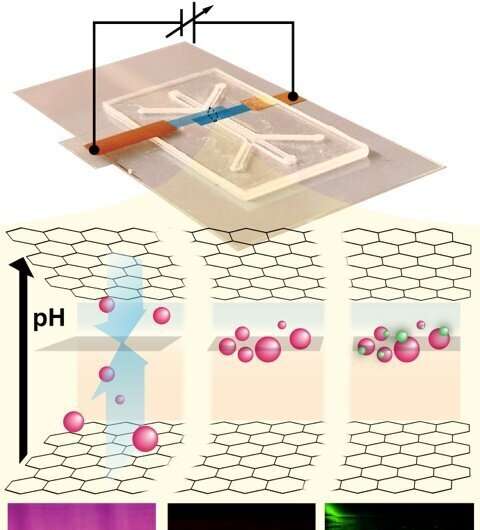
The work, recently published in ACS Nano, demonstrates an important advance in using graphene for electrokinetic biosample processing and analysis, and could allow lab-on-a-chip devices to become smaller and achieve results faster.The process of detecting biomolecules has been complicated and time-consuming. "We usually first have to isolate them in a complex medium in a device and then send them to another device or another spot in the same device for detection," says Ping, who is in the College of Engineering's Mechanical and Industrial Engineering Department and is also affiliated with the university's Institute of Applied Life Sciences. "Now we can isolate them and detect them at the same microscale spot in a microfluidic device at the same time—no one has ever demonstrated this before."
His lab achieved this advance by using graphene, a one-atom-thick honeycomb lattice of carbon atoms, as microelectrodes in a microfluidic device.
"We found that compared to typical inert-metal microelectrodes, the electrolysis stability for graphene microelectrodes is more than 1,000 times improved, making them ideal for high-performance electrokinetic analysis," he says.
Also, Ping added, since monolayer graphene is transparent, "we developed a three-dimensional multi-stream microfluidic strategy to microscopically detect the isolated molecules and calibrate the detection at the same time from a direction normal to the graphene microelectrodes."
The new approach developed in the work paves the way to the creation of lab-on-a-chip devices of maximal time and size efficiencies, Ping says. Also, the approach is not limited to analyzing biomolecules and can potentially be used to separate, detect and stimulate microorganisms such as cells and bacteria.
Co-authors on the paper, "Graphene-Enabled High-Performance Electrokinetic Focusing and Sensing," are Ping's students, Xiao Fan (first author) and Xiaoyu Zhang.

 Previous page
Previous page Back to top
Back to top







